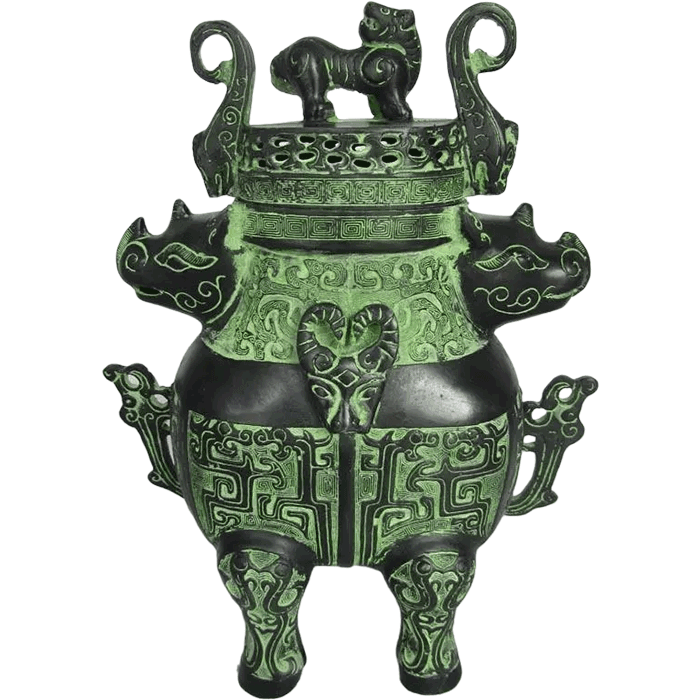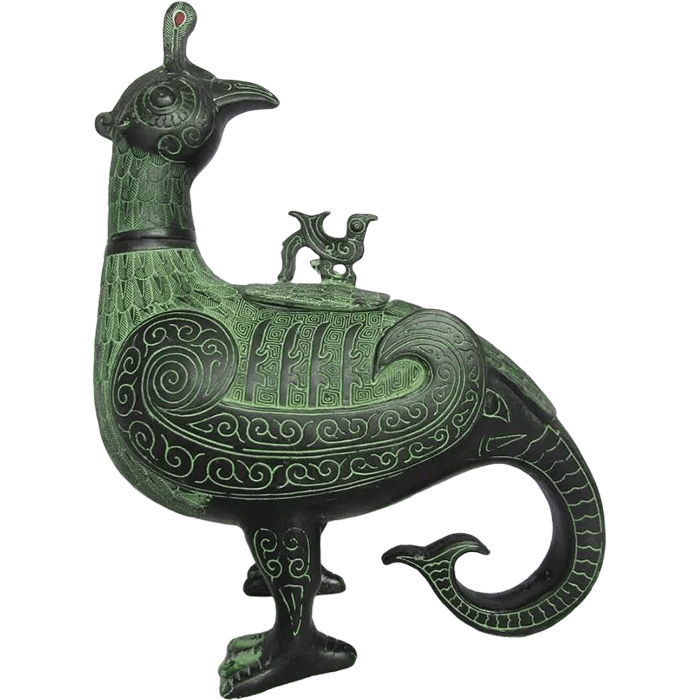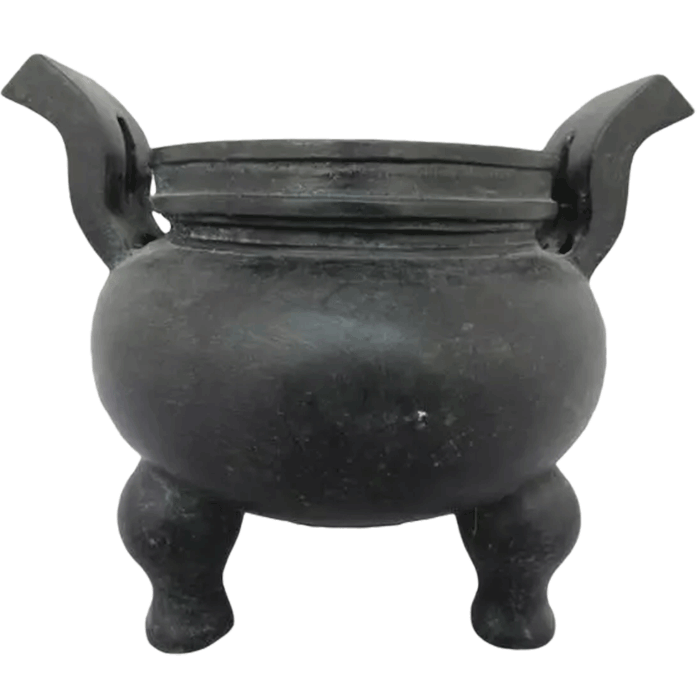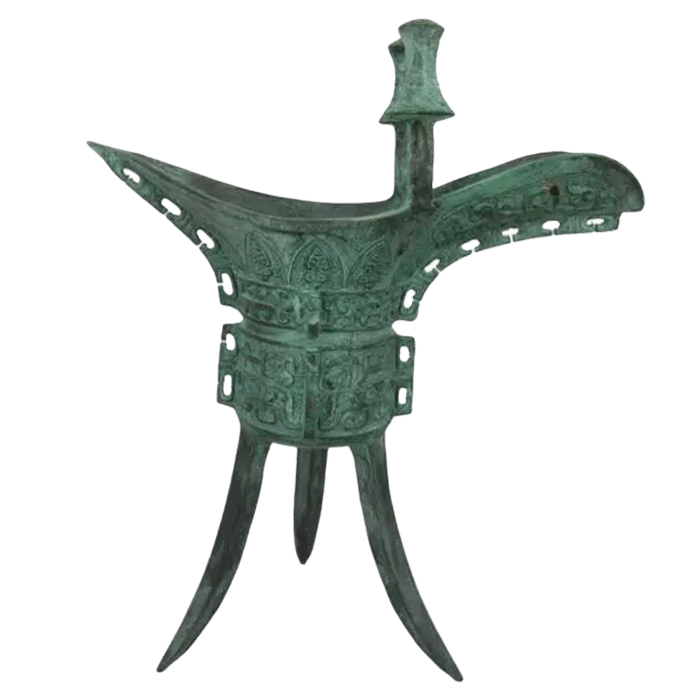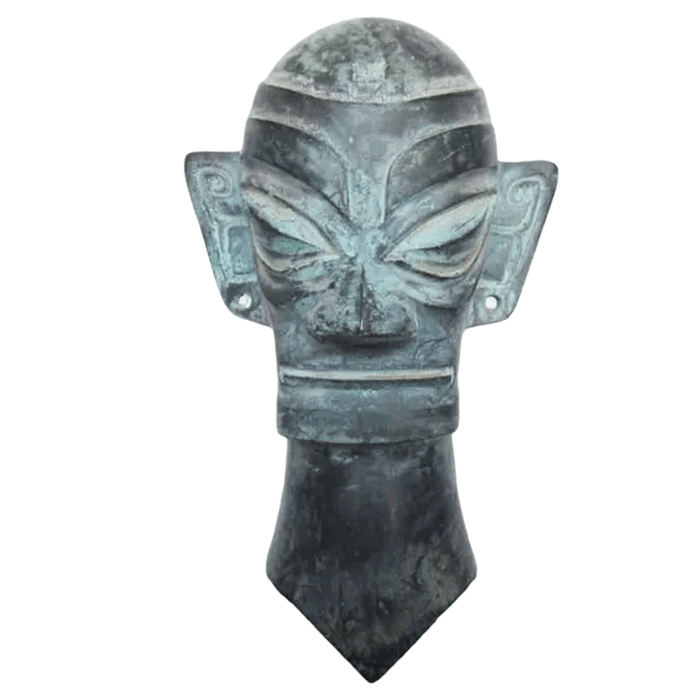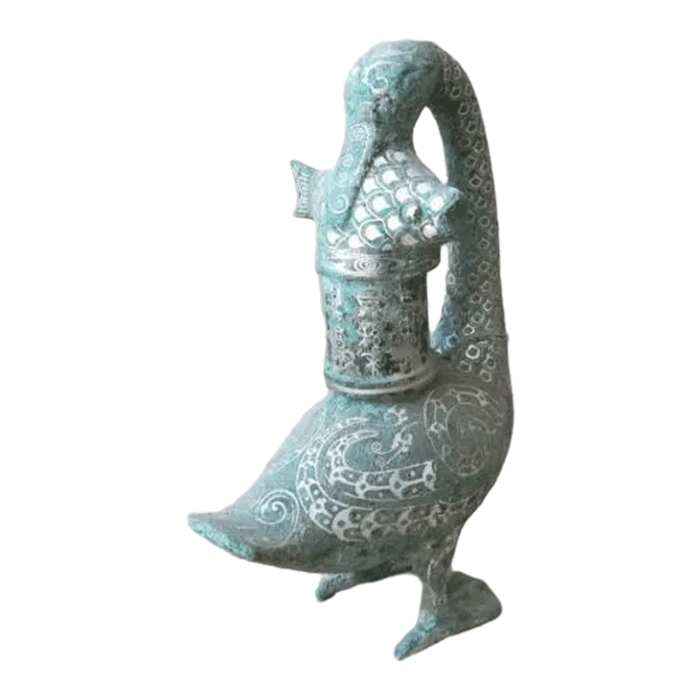How the Ancient Chinese Made Bronze Wares
Bronze, known as "gold" or "auspicious gold" in ancient times, is an alloy of red copper and chemical elements such as tin, nickel, lead, and phosphorus. This alloy is the earliest alloy in the history of metallurgy in the world. After thousands of years of chemical reactions, a layer of blue-gray rust will be formed on the surface.
Bronze wares are utensils and utensils made of bronze as the basic raw material. They are not owned by ordinary people, but have been handed down to the world as a symbol of power and status, and a ritual vessel for recording events and achievements. Therefore, historians also call the period when bronze tools and bronze ritual vessels were used in large quantities the "Bronze Age". It is conservatively estimated that this period from the Xia, Shang and Zhou dynasties to the Qin and Han Dynasties spanned about two thousand years, and it was a glorious period for the birth, development, maturity and even heyday of bronze wares. Bronze ware reveals the casting technology, cultural level and historical origin of the pre-Qin period to people with its unique shape, exquisite decoration and elegant inscriptions, so it is praised by historians as "a living history book".
Since bronzes played such an important role in ancient Chinese history, how did the ancients make bronzes?
Whether as a tool or as a ritual vessel, bronze ware has an irreplaceable superiority in raw materials. There are a lot of natural pure copper fast in nature. Therefore, copper has become one of the earliest metals recognized by human beings. However, red copper has low hardness and is not suitable for making production tools, so it does not play a big role in production. Later, people discovered tin ore and learned the technology of refining tin. On this basis, people realized that copper with tin added is harder than pure copper.
According to modern scientific measurement, the hardness of red copper is 35 degrees of Brin's hardness scale. Adding 5% tin will increase its hardness to 68 degrees. Adding 10% tin will further increase its hardness to 88 degrees. After tempering, its hardness can continue to increase. The ancients in China have already accurately grasped the lead-tin ratio of bronze, and they can mix tin and lead in different proportions according to different casting expectations. "Zhou Li·Kao Gong Ji" clearly records the different alloy ratios for making different utensils: "Six parts of gold and tin make up one part, which is called Zhong Ding Qi. Five parts of gold and tin make up one part, which is called ax and catty. In the second place, it is called cutting and killing arrows. The gold and tin are half, which is called the Qi of fire.” Generally speaking, the more tin added, the harder the cast bronze, but at the same time the bronze will become more brittle.
In addition, the fluidity of the bronze solution is excellent, and the shrinkage rate is very small when solidified, so bronze can cast some objects with very delicate details. The chemical properties of bronze are also relatively stable, with the characteristics of corrosion resistance, which can be stored for a long time, and its melting point is low, so it does not need a high temperature when melting. Therefore, after the bronze is worn out, it can be returned to the furnace for recasting. This creates convenient conditions for the casting of bronze ware. People only need to mix the bronze solution according to the established alloy ratio, pour it into the pre-made model, wait for it to solidify, and then take the bronze ware out of the model. Because of this, the number of ancient bronze ware unearthed in various parts of my country is very large.
China's Bronze Age began in the late Xia Dynasty, and the bronzes of the Erlitou Culture Period had major breakthroughs and developments in terms of casting technology and craftsmanship compared with the Copper and Stone Age. At this time, small solid objects, tools and weapons were still molded in a simple single-fan category, while the production of bronze hollow objects such as Tongjue often required the use of inner molds. It can be observed from the casting marks on the molds that people at that time had already adopted the casting method of multiple molds.
The early and mid-Shang Dynasty was a period of mature development of bronze ware. During this period, the system of ritual vessels, mainly wine vessels, was initially established, and the types of weapons increased. The application of separate casting technology has been relatively skilled, and the technology of making and combining molds has been quite advanced. Bronze wares of this period were found in the middle reaches of the Yellow River and the Yangtze River, which laid the foundation for the prosperity of bronze art.
The period from the late Shang Dynasty to the early Western Zhou Dynasty was a period of brilliant bronze art. During this period, people used a combination of relief and flat carvings to make the body covered with exquisite patterns. Using exaggerated and symbolic techniques to express animal gods and monsters, the animal face pattern is unprecedentedly developed, which is majestic, mysterious and full of vitality. The inscriptions used to record events appeared at the end of the Shang Dynasty and continued to the Western Zhou Dynasty, making the casting of long inscriptions an important feature of the bronze ritual vessels of the Western Zhou Dynasty. At the beginning of the Zhou Dynasty, the use of ritual utensils followed the commercial system, and there were signs of a shift to the heavy food system.
The bronze ware in the middle and late Western Zhou Dynasty formed a system of heavy food, and the system of tripods, chime bells and the custom of giving orders to make utensils had already been formed. During this period, new types of utensils emerged one after another, dignified and thick, and the decorations were mostly animal deformations, which either flowed smoothly or were simple and simple. Casting inscriptions on utensils became popular, and heavy utensils with long inscriptions began to be common. In the early Spring and Autumn period, the shape and decoration of bronze wares continued the style of the middle and late Western Zhou Dynasty. Bronze casting industries were generally established in various vassal states. Because of these changes, the mid-to-late Western Zhou Dynasty to the early Spring and Autumn Period is called the "transformation period" of bronze ware.
From the mid Spring and Autumn Period to the Warring States Period, the development of bronze art reached its climax again. Bronze wares in all countries tend to mature, with obvious regional characteristics. The bronze arts of Jin and Qin in the north, Qilu in the east, and Jingchu in the south complement each other. The practicality of the utensils in daily life was strengthened, and the function of the ritual utensils gradually disappeared. The dragon-themed decorations were detailed and complicated, and the portraits of the characters' activities appeared creatively as the main patterns on the bronze wares. The lost-wax method and the block-and-block printing method were produced, the mosaic technology was gorgeous, and the inscription fonts also focused on beautification. In the late Warring States period, bronze art began to tend to be simple and plain, and it declined in the Qin and Han Dynasties.
According to different uses, bronze wares are mainly divided into five categories: wine vessel, food vessel, water vessel, musical instrument and weapon. Among them, wine vessel and food vessel have many types, including more than ten types such as jue, horn, pot, you, tong, yi, bean, tripod, zi, gui, dun and ge. In addition, with the development of the times, the decoration of bronze wares also tended to be complicated. The early patterns of breast nails, clouds and thunders, and hooked thunders were repeatedly combined. Among the animal decorations, the Kui pattern, the dragon pattern and the Panchi pattern are the three most typical ones. According to legend, Kui is an animal similar to a dragon, and its patterns are mostly presented in the form of "one horn, one leg, open mouth, and curled tail". With the development of the times, Kui patterns have gradually formed geometric shapes as the main decoration on utensils. The Pan Chi pattern resembles the Kui pattern, with an open mouth and a curly tail. Most of them are composed of a combination of coiled and curved snakes to form a relatively complicated pattern. "Shuowen Jiezi" records: "Dragon, as long as a scale insect, can be quiet and bright, and can be thin and giant." The dragons in the bronze decorations mostly appear in a flexed form. The dragon is a symbol of the Chinese nation, and the appearance of the dragon pattern indicates the awakening of national consciousness.
China's Bronze Age created a rich material and spiritual culture. On the one hand, the sharpness of bronze tools is far better than that of stone tools, and the farm tools made of bronze have strongly promoted the development of social production, and cities with large populations have emerged. In these cities, people built huge palaces, built large royal tombs, built defensive facilities such as city walls and trenches, and connected the cities with various places by means of transportation such as carriages and boats. On the other hand, the inscriptions engraved on bronze vessels not only recorded daily life, but also greatly enriched people's spiritual world, and sciences such as astronomy, calendar, and medicine gradually developed. The splendid bronze culture created by bronze wares occupies a unique position in world culture.
Sculpmart is a professional bronze art and bronze wares manufacturer providing Chinese Bronze Handcraft arts which will allow you to have a chance to own a masterpiece of Chinese bronze sculptures. If you like, you may choose the style to customize, send us the image and design, our craftsman will reproduce and cast a perfect bronze ware for you.


